09 Jun ‘The Blank’ by Ruth E Richman 1948
Posted at 16:35h
in Pattern Making Instructions, Pattern Puzzles, Stretch Patterns, Vintage Patterns, Womens Knit Block
0 Comments
So it’s a weird one this week. Over sixty years old and born of a time that valued efficiency in manufacture over effective use of resources. Patent #2,454,208, invented by Ruth E Richman in 1946, was filed as:
‘An object of the invention is to simplify the manufacture of blouses, coats and similar garments by constructing them from a blank consisting of a single piece of material.’
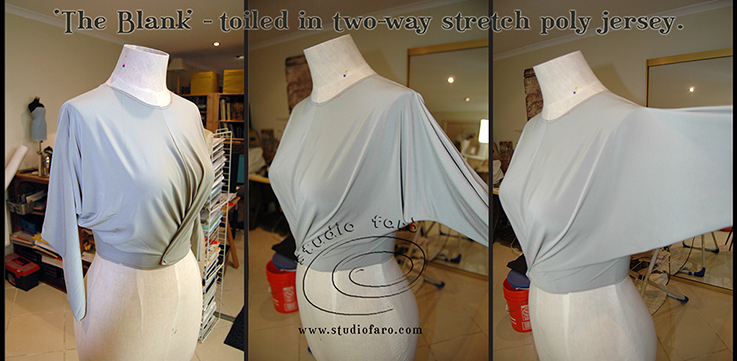
And Ruth was not alone. We have located at least six different patents, spanning turn of the twentieth century to the 1960’s, that focused specifically on one-piece patterns that minimised the time spent in manufacture. We have previously showcased a The Patent Blouse that similarly features a one-piece pattern with minimal seaming for greater efficiencies in production. So certainly a popular idea at the time.
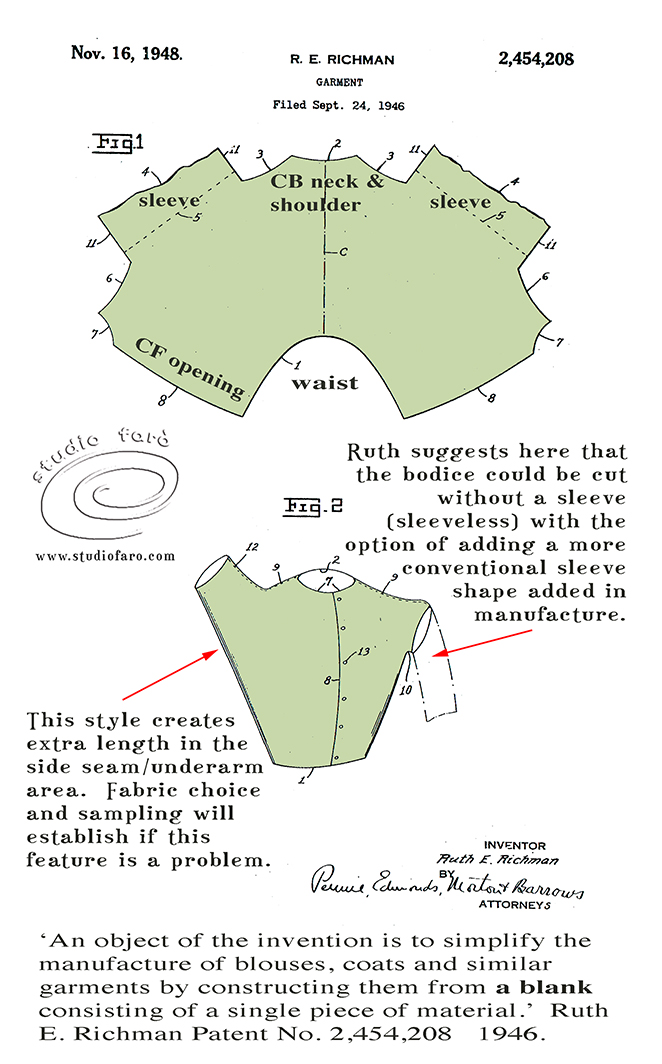
When I first come across such challenging pattern ideas it takes me a while to figure out what’s going on. Often the first thing I do is work back through the shape to see the block within the pattern. Taking the easy route I have started with my knit block (more forgiving with challenging patterns) and reconstructed the patented pattern. Ruth has described in detail her method for achieving this shape which I found a little challenging. Patents, after all, are not written in an easy-read style. So back to my blocks…
Basically what we are talking about here is a grown-on sleeve for the front and back bodice. The diagram below illustrates the usual position of the sleeve in the Kimono Block. If you continue to swing the sleeve upward, pivoting on the shoulder point, you will get close to the pattern shape proposed by Ruth E Richman. That is the centre of the sleeve aligned with the shoulder seam at a near right angle.
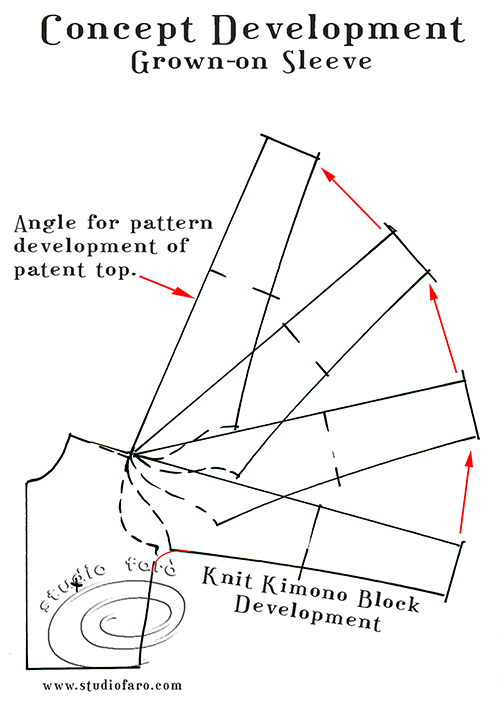
Using my Knit Block for two-way stretch, I have traced the front and back bodice, overlapping them at the waist for a closer fit (-4cm) and opening up the underarm area to fit the sleeve. The crucial measurement here is between the shoulder points. This space should be the same measurement as the armhole of the block (front & back). Here I have used an elbow length sleeve and raised the back waist to balance the waist of the bodice. A quick reminder that my test toile was a two-way stretch. It may work in a one-way stretch fabric but different blocks and toiles would be required for woven fabric.
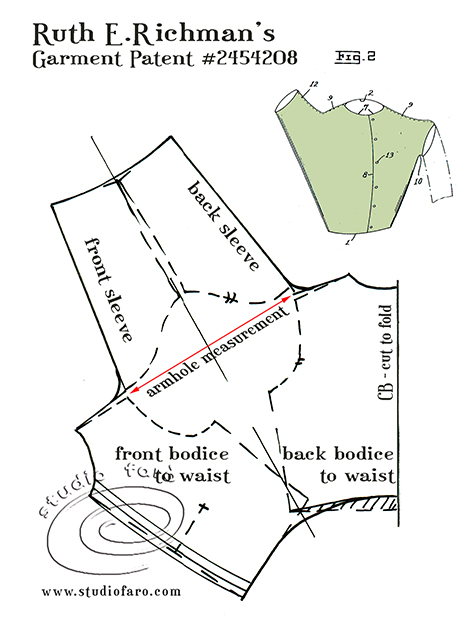
Looking at the final pattern below you can begin to understand the pros and cons of this idea. It was fun to solve this puzzle and reconstruct the garment parts inside the one-piece pattern but is there much to gain?
Limitations:
- All styling is locked into a waist seam – there is no way to extend this one-piece past the waist. This implies design limitations that may not suit current fashion trends.
- There is a huge amount of wasted fabric. Does not fit current thinking regarding the most effective use of resources.
- A strong vintage appearance – the styling is very 1940/50’s oriented. Niche market.
Positives:
- Minimal construction (sewing) time. Implies a reduction in direct costs.
- Distinct vintage silhouette. Niche market.
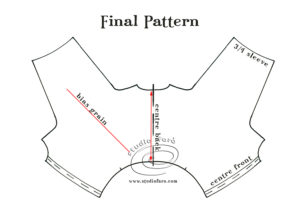
So let us know what you think of these little investigations. Do you think you could use this idea in one of your projects? We love to hear from you so leave your comments and questions below.
Enjoy 🙂
Take this moment to sign up for my fabulous newsletter! Every month or so I send an email newsletter with new website content and always, always an enormous discount code for all my sewing patterns, garment blocks and pattern making instructions.
This discount code is for subscribers only. Don't miss out!


No Comments